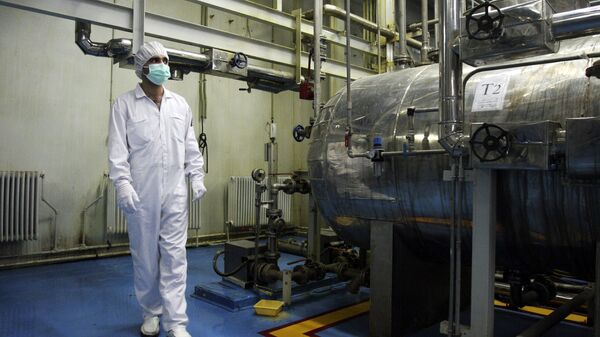According to Kamalvandi, cited by the Tasnim news agency, a shipment of nuclear materials has been sent to the Fordow nuclear site and uranium hexafluoride (UF6) will be injected into centrifuge machines.
Kamalvandi stressed that the International Atomic Energy Agency (IAEA) has also been informed about the shipment of nuclear materials to the Fordow facility, adding that Iran’s stockpile of enriched uranium - now around 500 kilograms - would increase by some 6 kilograms per day as soon as the centrifuges of Fordow start working.
"It is necessary to say that everything is being carried out under the supervision of the International Atomic Energy Agency", the AEOI said in the press release.
On 8 May, the first anniversary of the United States' unilateral withdrawal from the 2015 JCPOA, Iran announced a gradual reduction of its nuclear obligations. Tehran then announced that it would start abandoning some parts of its nuclear obligations every 60 days unless European signatories to the deal ensured Iran's interests amid Washington’s reinstated sanctions.
Under the JCPOA, Iran was supposed to have repurposed its Fordow Fuel Enrichment Plant as a centre for the production of stable isotopes, avoiding enriching uranium and leaving Natanz as the only uranium enrichment facility.
On Tuesday, Iranian President Hassan Rouhani said that Tehran would start injecting gas into centrifuges at the Fordow facility. Rouhani stressed, however, that the decision was reversible and Iran would suspend gasification as soon as the JCPOA signatories complied with their commitments.
According to the US Department of State, Iran's assertions that its uranium enrichment work is reversible are false. Washington has pointed out that Iran’s research and development work on new centrifuge designs is irreversible learning that could enhance the country's development of a nuclear weapon if Tehran decided to pursue one.


